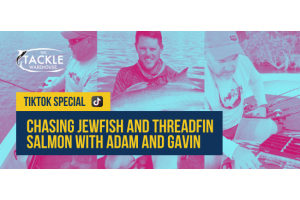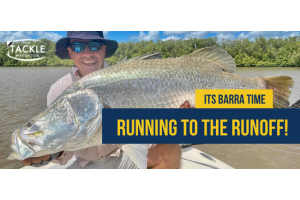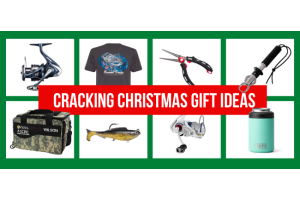For Australian anglers, the colder months are the prime time to get out and target one of our more sought after and iconic sport and table fish - The Mighty Snapper!
Although snapper are a year round proposition, the cooler months coincide with the snapper’s peak breeding period along the East Coast. This offers opportunity for smaller boats, kayaks and even land-based anglers to probe the bays, river mouths and estuaries in search of snapper. This month we’ve put together some of the key points and tips that will improve your chances of catching these crimson fish.
In Part 1 we cover options for targeting snapper with bait, offering hints on rigs that promote great bait presentation that optimise the chance of catching that trophy Snapper.
Bait:
If you are heading out on your very first attempt to wrangle a snapper, targeting them with bait would be a great option. Like a famous lubricant company said many many years ago, ‘Oils ain't oils’ and coincidentally getting the appropriate baits will greatly increase chances of achieving the desired bite.
An initial aspect to consider when targeting snapper on bait, is to determine the kind of prey they will be feeding on in your area. If there is a known presence of squid in the location that you’re going to fish then this would be a great choice. Baitfish like anchovies, sardines and pilchards could frequent your local waterway and naturally these would be worth trying. However, snapper can be scavengers when pickings are limited so any decent quality bait can put you in great stead.
The concept of ‘matching-the-hatch’ is universal. Whether you are chasing wild brown trout on meticulously tied dry flies in the highlands of Tasmania or trolling up black marlin off Cairns on a skipping scaley, it always pays to do your research to develop a greater understanding of your target species and what prey they are likely to be feeding on.
Once you have researched and concluded the bait/s to use, the next step is to acquire the best quality. Nothing beats live or fresh bait, especially for snapper! Most quality, full-service tackle stores (those with a brick and mortar building you can shop in) are likely to have fresh, or quality snap-frozen, bait delivered regularly. Alternatively, they could assist you with locating and securing some live bait’s once you are on the water.
Presentation, Presentation, Presentation!
Presentation is so key when targeting Snapper that we had to mention it 3 times in this heading alone! There is a lot to think about when it comes to rigging your meticulously gathered fresh bait and not all of it is as obvious as you might think.
First thing to consider is how your bait is going to look as it wafts around in the current and eventually makes it’s way to the ocean floor. Snapper are a very curious fish but they are also very wary and as such an unnatural fall because your bait has slid down your hook/s and is now bunched up in a ball, is a far less appealing bait than one that is rigged nice and straight and allowed to gently waft through the water column.
Whether you are fishing whole fish baits, fillet baits, squid or octopus tentacles, the right rig will be the key to getting the bite in the first place and then hopefully converting it. Well tied 1,2 and 3 hook snell rigs are the perfect way to ensure that your baits are presented correctly.
If you have never tied a snell rig, our very own Gordon McDonald wrote a great article a little while ago on how to tie a simple snell rig. You can check it out here - or you can drop into the shop and Gordon or one of the other guys will be able to teach you how to tie this rig so that you can present your baits as naturally as possible and allows for great hook point exposure.
Big Baits, Big fish!
A big advantage in learning to tie your own snelled hook rigs is that you can present large baits naturally. When it comes to snapper fishing, big baits often equal big fish! The principal is quite simple but also very effective.
By using a larger bait, be it a fillet bait or a whole fish, a couple of interesting things happen. As your bait wafts around in the current, the bait slowly starts to leach scent, creating a small burley trail in the vicinity.
Typically, this attracts the attention of the smaller ‘picker-type' fish and creates activity around your bait. As the small fish pick at the bait, additional burley and feeding commotion is created, which generally draws the attention of the larger, more wary snapper lurking in the area!
Smaller baits are very effective for the average snapper yet are more likely to get picked apart before attracting the attention of the bigger snapper patrolling wider. So when in doubt, put a big bait out!
Tackle:
When chasing snapper, the terrain you fish will dictate the tackle you need to use. Deeper water and rugged aquatic structure generally requires heavier tackle to enable you to pry the quality fish out.
Line classes in the 15-24KG range are often used when targeting snapper in this terrain, however some still fish lighter to optimise bite potential. If you are targeting snapper in shallower waters, a more finesse approach will improve your chances and still allow you to land quality specimens.
Commonly, 7kg to 12kg tackle will get the job done. By fishing as light as the situation allows, utilising fluorocarbon leader, quality rigs, a minimum of lead and great baits, you can greatly optimise your time on the water. If you need any help selecting the right gear or rigs, drop in or give us a call and we will be able to help you make the appropriate choice to suit your budget and angling scenario.
That’s it for part one of our snapper basics article.






